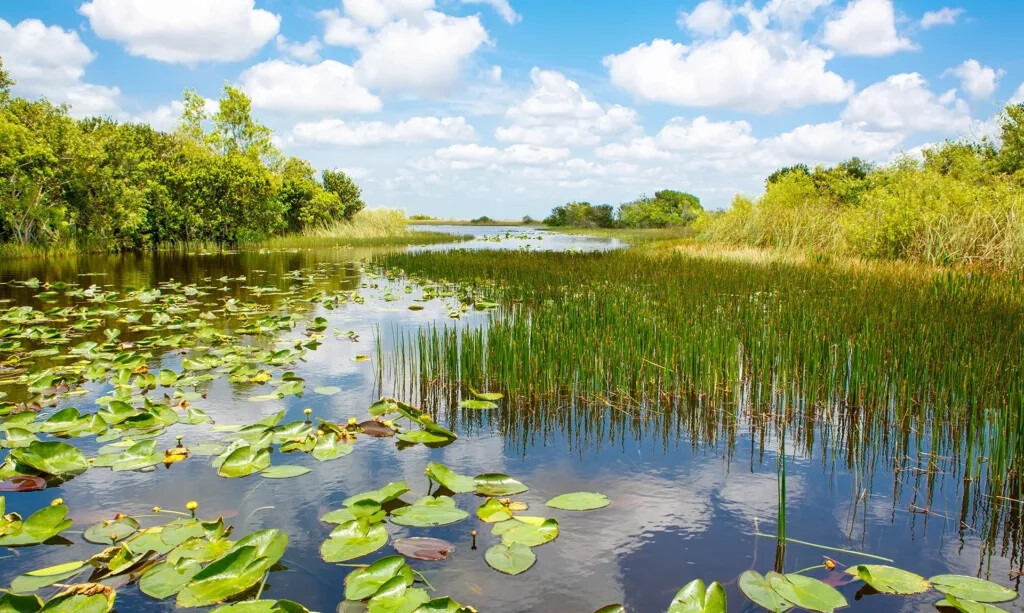
Washington D.C. - A new water regulation being pursued by the Trump administration is raising significant concerns over the potential weakening of wetland protection across the United States. Particularly alarming is the prospect of hundreds of thousands of acres of wetlands in northeastern South Dakota losing their federal protection, triggering strong opposition from environmental groups and local communities.
New Regulation Limits Protection Based on 'Surface Water Connectivity'
The crux of the issue lies in the Trump administration's proposed strict definition of "Waters of the United States" (WOTUS). Under this new definition, a wetland would only qualify for federal protection if it has a "continuous surface water connection" to navigable rivers or lakes. This interpretation is seen as reflecting the sentiment of the 2023 Supreme Court ruling in Sackett v. EPA, which held that a wetland must have a "continuous surface water connection" to other protected waters to be covered under the Clean Water Act. The court also stated that streams must have a "relatively permanent" flow to warrant protection.
This stringent criterion stands in stark contrast to the comparatively broader interpretation under the previous Biden administration. The Trump administration's Environmental Protection Agency (EPA) and Army Corps of Engineers are moving towards a highly restrictive scope for wetland and stream protection.
NRDC Report Warns of 70 Million Acres of Unprotected Wetlands Nationwide
A recent report by the Natural Resources Defense Council (NRDC) warns of the severe consequences of these regulatory changes. Utilizing Geographic Information System (GIS) modeling, the analysis projects that approximately 70 million acres of wetlands across the U.S. – about 84% of the currently protected area – could lose federal protection under the new definition.
The impact is expected to be particularly devastating for South Dakota. The report indicates that 93% of the state's total wetland acreage and 99% of individual wetlands are at risk of being excluded from protection. This means the fate of 1.7 million acres of South Dakota wetlands, home to nearly half of the state's endangered species, could be left to the discretion of developers and agricultural interests.
Northeastern South Dakota's Ten Counties Face Most Severe Impact
The NRDC analysis identifies ten counties in northeastern South Dakota (Brown, Beadle, Hand, Spink, Faulk, Edmunds, Roberts, McPherson, Sanborn, and Hyde) as facing the most significant losses, with an estimated 460,000 individual wetlands totaling 743,000 acres potentially losing protection.
Exclusion of Non-Permanent Streams Raises Concerns for Drinking Water and Flood Control
Furthermore, the new regulation threatens the protection of non-permanent streams, which constitute the majority of waterways in the U.S. and are crucial for drinking water supply and flood control. If only permanent streams remain protected, over 8 million miles of streams nationwide could be excluded from the Clean Water Act's safeguards.
Proposed Farm Bill Amendments Add to the Threat
Adding to the concerns, a lawsuit in Iowa seeks to invalidate the federal government's "Swampbuster" and "Sodbuster" provisions. These provisions link wetland conservation to participation in agricultural safety net programs, and their repeal could further incentivize wetland destruction.
Environmental Groups and South Dakota Express Concerns
Environmental organizations are warning that the proposed regulation will lead to increased flood risks, worsened water pollution, and the destruction of vital wildlife habitats. John Devine, NRDC's director for water, said, "This analysis confirms that the Supreme Court’s narrow ruling has severely undermined our ability to protect wetlands, leaving communities more vulnerable to flooding and water pollution and threatening the wildlife and habitat that underpin local economies."
The National Wildlife Federation, the largest conservation organization of hunters and anglers in the U.S., has also voiced strong opposition. Jim Murphy, the organization's legal advocacy director, stated, "This is the fourth attempt to define 'Waters of the United States' in the last decade. We need to stop treating this critical issue like a political football." He also pointed out that "given the potential for EPA staffing shortages, this action will further increase the burden and costs for states and local governments to ensure safe water."
Limited Direct Impact on South Korea, but International Environmental Regulatory Trends Warrant Monitoring
The Trump administration's move to reduce wetland protection in the U.S. is unlikely to have a direct impact on South Korea's environment. South Korea operates its own wetland protection system, and U.S. policy changes do not directly affect domestic laws or environmental management.
However, this issue highlights a potential trend of environmental deregulation in developed countries, which warrants attention. Environmental policy shifts in leading nations can indirectly influence policy directions in other countries. Particularly in the context of active international discussions on biodiversity conservation and sustainable development, the U.S. decision has raised concerns within the international community, and its future impact on global environmental regulatory discussions requires continuous monitoring.
Future Outlook and Response Tasks
The U.S. EPA has announced a 30-day public comment period and stakeholder listening sessions regarding the proposed regulation. However, a significant shift in the Trump administration's stance is not anticipated.
Without its own comprehensive wetland program or monitoring plan, South Dakota faces a serious threat to its vital wetland resources, which contribute significantly to the state's $1.4 billion annual fishing and hunting economy and overall quality of life.
Domestic environmental organizations and relevant experts in South Korea should use this U.S. case to reiterate the importance of wetland conservation and further strengthen domestic wetland protection policies and efficient management strategies. Continuous monitoring of international environmental regulatory trends and analysis of their potential impact on domestic environmental policies are also necessary.
[Copyright (c) Global Economic Times. All Rights Reserved.]






























